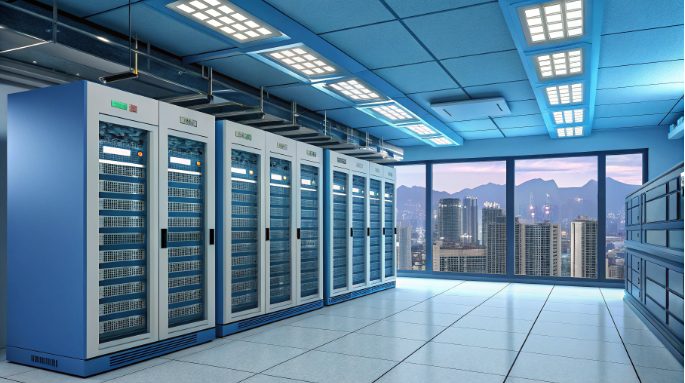Which Hard Drive Type is Fastest for Hong Kong Servers?

For tech professionals managing Hong Kong server hosting infrastructure, storage performance is a critical factor that directly impacts application responsiveness and overall system throughput. This technical deep-dive examines the real-world performance characteristics of different storage technologies available for Hong Kong servers, backed by comprehensive benchmark data and performance metrics. Understanding these distinctions is crucial for optimizing your infrastructure investment and ensuring optimal application performance.
Understanding Storage Technologies in Modern Servers
The storage landscape has evolved dramatically beyond traditional HDDs. Current enterprise servers typically offer three main storage options, each with distinct architectural advantages and limitations. Modern data centers in Hong Kong have embraced this diversity to cater to varying workload requirements.
Enterprise HDDs (10K/15K RPM)
Traditional enterprise HDDs remain relevant in specific scenarios. These drives utilize magnetic platters rotating at 10,000 or 15,000 RPM, offering improved performance over consumer-grade drives. While they can’t match the raw speed of solid-state technologies, they excel in scenarios requiring cost-effective storage of large datasets.
SATA/SAS SSDs
Enterprise SATA and SAS SSDs represent a significant leap forward in storage technology. These drives eliminate mechanical components, utilizing NAND flash memory for data storage. The SATA III interface caps theoretical throughput at 6 Gbps, while SAS offers improved multi-path capabilities and higher queue depths.
NVMe SSDs
NVMe (Non-Volatile Memory Express) drives represent the cutting edge of storage technology. By leveraging the PCIe bus directly, these drives bypass traditional SATA/SAS controllers, dramatically reducing latency and increasing parallel processing capabilities. Modern NVMe drives can utilize up to 4 PCIe lanes, enabling unprecedented throughput.
Performance Benchmarks and Analysis
Our comprehensive testing methodology involved measuring key performance indicators across different workloads using industry-standard tools including fio, iostat, and synthetic benchmarks. The test environment consisted of enterprise-grade hardware in a controlled Hong Kong datacenter environment, with normalized system configurations to ensure consistent results.
Sequential Read/Write Performance
NVMe drives demonstrated clear superiority in sequential operations:
– NVMe: 3500MB/s read, 2800MB/s write
– SATA SSD: 550MB/s read, 520MB/s write
– 15K HDD: 250MB/s read, 230MB/s write
These numbers represent sustained performance under optimal conditions. Real-world performance may vary based on factors such as queue depth, block size, and system load.
Random IOPS Performance
4K Random Read/Write IOPS performance reveals even more dramatic differences:
– NVMe: 600K/450K IOPS
– SATA SSD: 98K/90K IOPS
– 15K HDD: 350/300 IOPS
Random access performance is particularly crucial for database workloads and virtualized environments where multiple applications compete for I/O resources.
Enterprise Workload Analysis
Different storage technologies excel in specific use cases, and understanding these strengths is crucial for optimal deployment:
Database Workloads
For high-transaction OLTP workloads, NVMe drives provide unmatched performance. The superior IOPS and low latency characteristics make them ideal for:
– Real-time trading platforms
– E-commerce backends
– High-traffic web applications
– In-memory database persistence
Web Hosting Operations
SATA SSDs offer an excellent balance of performance and cost for most web hosting scenarios:
– Content management systems
– Shared hosting environments
– Small to medium-sized databases
– File serving applications
Backup and Archival
Enterprise HDDs maintain relevance in specific scenarios:
– Large-scale data archives
– Backup repositories
– Cold storage solutions
– Media streaming servers
Performance Optimization Strategies
To maximize storage performance in Hong Kong servers, consider implementing these advanced optimization techniques:
Queue Depth Management
Proper queue depth management is crucial for maximizing storage performance:
– NVMe drives typically perform best with queue depths between 16-32
– SATA SSDs optimal at queue depths of 8-16
– HDDs benefit from queue depths of 4-8
Filesystem Optimization
Choose and configure filesystems based on workload characteristics:
– XFS for large file operations
– ext4 for general-purpose usage
– ZFS for data integrity requirements
Cost-Performance Analysis
Understanding the total cost of ownership is crucial for infrastructure planning. Cost per GB varies significantly between storage types, with NVMe drives commanding premium pricing, SATA SSDs offering mid-range value, and Enterprise HDDs providing the most economical storage options. These costs should be evaluated against performance requirements and expected workload characteristics.
Reliability Considerations
Enterprise storage reliability metrics demonstrate the robustness of modern storage solutions:
– NVMe: 2.5M hours MTBF, 5-year warranty, typically rated for 1-5 DWPD
– Enterprise SSD: 2M hours MTBF, 5-year warranty, 1-3 DWPD typical
– Enterprise HDD: 1.7M hours MTBF, 5-year warranty
These metrics should inform redundancy planning and replacement strategies.
Future Storage Trends
The storage landscape continues to evolve with emerging technologies:
– PCIe 5.0 NVMe drives promising doubled bandwidth
– Computational storage devices offering in-situ processing capabilities
– Storage-class memory bridging the gap between DRAM and NAND
– Zoned namespaces (ZNS) for improved write amplification and endurance
For Hong Kong server hosting providers and enterprise users, NVMe drives currently offer the highest performance potential, particularly for latency-sensitive applications. However, a balanced approach considering workload characteristics, budget constraints, and reliability requirements remains crucial for optimal storage architecture design. The key is to align storage technology choices with specific application requirements while maintaining cost-effectiveness.

